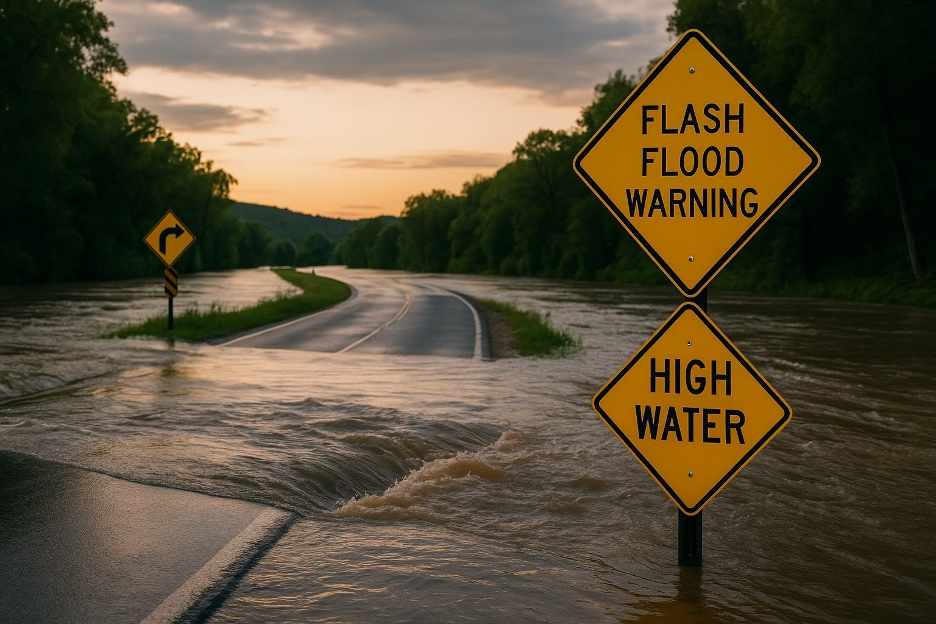A flash flood warning signals imminent or ongoing flooding in your area, often within minutes to hours. It’s issued when heavy rain, dam breaks, or rapid snowmelt create risky conditions. Immediate action is essential-move to higher ground, avoid driving, and stay informed via alerts. This guide explains what a flash flood warning entails, why it’s serious, how to respond effectively, and what steps you can take before, during, and after an event to protect lives and property.
What Is a Flash Flood Warning?
A flash flood warning is issued by the National Weather Service (NWS) when life-threatening flooding is occurring or expected within 6 hours. These warnings highlight fast-moving floodwaters created by intense rainfall, dam failures, or sudden snowmelt. Unlike regular flood warnings, flash floods can develop rapidly-sometimes within as little as 30 minutes.
Warnings are area-specific, targeting flood-prone zones like narrow canyons or urban underpasses. Timely communication through radio, mobile alerts, sirens, and social media allows communities to evacuate before it's too late.
Why Flash Flood Warnings Demand Immediate Action
Flash flood warnings are more dangerous than general ones for several reasons:
1. Speed of Onset
They develop quickly-water can rise several feet in minutes, catching people off-guard.
2. Water Power
Moving water just 6 inches deep can knock over an adult; 12 inches can float a vehicle.
3. Debris Risk
Floods often carry logs, stones, and even vehicles, increasing the potential for injury and infrastructure damage.
4. Widespread Impact
Even small local storms or upstream rainfall can trigger flash floods miles downstream.
Because of these risks, a warning requires immediate and unhesitating action, not delayed planning.
Differences: Advisory vs. Watch vs. Warning
The NWS issues three flood-related alerts:
- Flash Flood Advisory: Conditions likely to cause minor flooding, e.g., ponding or low-water crossings.
- Flash Flood Watch: Flash flooding is possible in the next 6–12 hours-prepare and stay alert.
- Flash Flood Warning: Flash flooding is happening or imminent-take immediate action.
Do not wait for rainfall to begin before responding. The warning means you are already at risk.
Before a Warning: Preparedness Steps
Know Your Risk
Study flood maps for your area. Neighborhoods near rivers, storm drains, and low-lying zones flood more often.
Build a Family Plan
Decide evacuation routes to higher ground. Establish a meeting place and share a contact list of family members.
Assemble an Emergency Kit
Include bottled water, non-perishable food, a flashlight, a mobile phone charger, medical needs, and copies of important documents.
Stay Informed
Sign up for local alerts via phone, weather radio, or apps. Monitor forecasts, especially during storm season.
Protect Your Property
Install backflow valves, clear debris from gutters, and elevate valuables. Shift furniture and electronics to higher floors if flooding is possible.
These steps take minimal time but dramatically improve resilience during emergencies.
What to Do During a Flash Flood Warning
Once a flash flood warning is issued:
Get to High Ground Immediately
Avoid valleys, riverside areas, and waterways. Move to upper floors or designated shelters.
Avoid Driving
Never cross floodwaters, even if they seem shallow. Just 6 inches of fast-moving water can sweep away a vehicle.
Listen for Alerts
Use NOAA Weather Radio and official apps for real-time updates. Stay indoors unless evacuation is ordered.
Keep Communication Lines Open
Charge phones, keep emergency contacts handy, and share your location to help responders locate you in case of separation or injury.
Acting swiftly can save lives-take action before water reaches your doorstep.
After the Warning: What Comes Next
Return Only When Safe
An “all clear” will be issued when floodwaters recede. Don’t re-enter until authorities approve.
Document Your Losses
Photograph damaged items and property for insurance claims. Avoid standing water and debris.
Prevent Contamination
Throw away flooded food, disinfect surfaces, and wear protective gear as water may contain pollutants.
Address Structural Damage
Mold can develop within 24 hours. Ventilate areas and dry out rooms with fans. For major damage, consult a damage assessor.
Reach Out for Support
Many flood relief programs are available through FEMA, local nonprofits, or community organizations.
Taking these recovery steps helps ensure health and financial well-being after a flood.
Why Flash Flood Warnings Matter More Than Heavy Rain
Many underestimate the danger of flash flooding, but statistics show it’s among the leading causes of weather-related deaths in the U.S. Most fatalities result from vehicles swept off roads.
Why quick-flowing water is so deadly:
- It erodes roads and riverbanks in seconds.
- It hides debris and broken asphalt beneath murky water.
- It damages homes and infrastructure rapidly.
Proactive response and respect for warnings are essential-unlike slower broader floods, flash floods offer little time for recovery once they start.
Frequently Asked Questions
Can small creeks cause flash floods?
Yes. Even small creeks and dry washes can fill rapidly with heavy runoff.
What if I’m caught while driving?
Immediately exit the vehicle and move to higher ground. If water is deeper than six inches, getting out is safer than staying inside.
Do flash flood warnings expire?
Yes. Once the storm passes and water risks diminish, the NWS issues an all-clear. Follow official updates before resuming activities.
Are rural areas safe?
No. Lack of warning systems and communication makes rural flash floods especially dangerous. Stay alert wherever you are.
Can insurance cover flash flooding?
Standard homeowners' policies exclude flood damage. You’ll need a separate flood policy through FEMA's NFIP or a private insurer ahead of the threat.
Respect Flash Flood Warnings to Stay Safe
A flash flood warning isn’t a weather suggestion-it’s a serious safety signal. Floodwaters can overwhelm you in moments and cause irreversible damage. Protect your loved ones by preparing in advance, responding without hesitation, and rebuilding with resilience. With awareness and quick action, you can survive-and recover from-one of nature’s most sudden threats.
|


